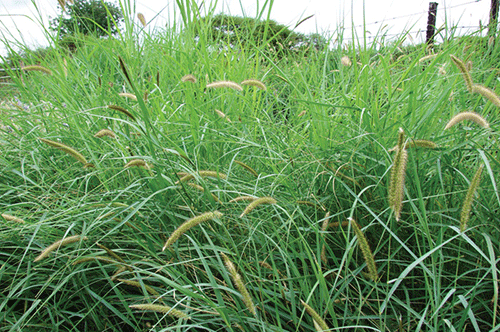Erastus Ngaruka
Namibian rangelands present a variety of forage resources to livestock and wild animals for survival. These plant groups include grass, trees, bush, and forbs utilised by both grazing and browsing animals. Grass is, however, the feed-base of grazing livestock in Namibia.
The abundance of the most valuable grass species in many parts of the country has decreased, resulting in a loss of grazing value and decreased carrying capacities of most grazing lands. Consequently, livestock production and potential income has been negatively affected. The disappearance of the most valuable grasses can be attributed to selective grazing pressure by livestock, which compromises their establishment and competitive ability to survive.
This gives rise to the opportunistic invasion of grazing lands by least desirable plants species, which include grasses such as Aristida stipitata, and other bush species such as the Senegalia mellifera (Blackthorn) amongst others. In addition, overgrazing exposes the soil to erosion, heavy trampling, resulting in poor rangeland productivity which is further exacerbated by the erratic rainfall patterns in the country.
The grazing value of an area is determined by the grass species composition and their abundance over the grazing land. Two types of grasses can be distinguished in terms of life cycles or life span; these are annual and perennial grasses. An annual grass (e.g. Eragrostis porosa, Tragus berternianus, etc.) is mainly the first grass type to emerge in abundance after the first rainfall showers, and thus, the first green food for grazing animals after the dry season.
Annual grasses have a shallow root system, few leafy materials and only need a minimal amount of moisture, nutrients and sunlight. Moreover, annual grasses grow and produce seeds fast but survive only during the rainy season and die at the onset of winter). The next annual grass will only grow from the seed. In contrast, perennial grasses such as Stipagrostis uniplumis, Eragrostis rigidior and others have a deep root system, massive leaf materials and require sufficient investment in terms of moisture, nutrients, and sunlight and thus take longer (about two-three months) to grow to maturity.
Perennial grasses constitute the bulk of the grazing animal’s diet throughout the year. At the end of the rainy season, perennial grasses do not die but go into dormancy for the whole dry season. They shed seeds and store nutrients in their stump as food reserves for the next season’s growth. The same dormant grass stump will produce fresh/new stems and leaves, and the seeds will germinate into new grasses (seedlings).
Furthermore, these grasses shed seeds as they start to dry-up (in dry season, from May). These seeds may be found collected in ditches on the soil. In August, the wind distributes and buries (sowing) them, and when the rainfall (watering) activities start, the germination process begins.
As an effort to restore grazing lands and produce their own fodder, farmers need to re-introduce valuable perennial grasses by re-seeding. These grasses include, Cenchrus ciliaris (Blue buffalo grass) and Anthephora pubescens (Wool grass) amongst others. They can be cultivated in fields like food crops and can also be planted in grazing areas.
The seeds can be harvested from standing dry grass or purchased from common agricultural input suppliers such as Agri-gro and Agra amongst others. It is very important that cultivated grasses are protected from disturbance (grazing) and are allowed to grow to maturity until they produce seeds and can regenerate themselves.
Once harvested, such grasses can be processed into hay or milled and mixed with other feedstuffs and used or stored for periods of fodder scarcity.
* Erastus Ngaruka is Agribank’s Technical Advisor (Livestock & Rangeland)


